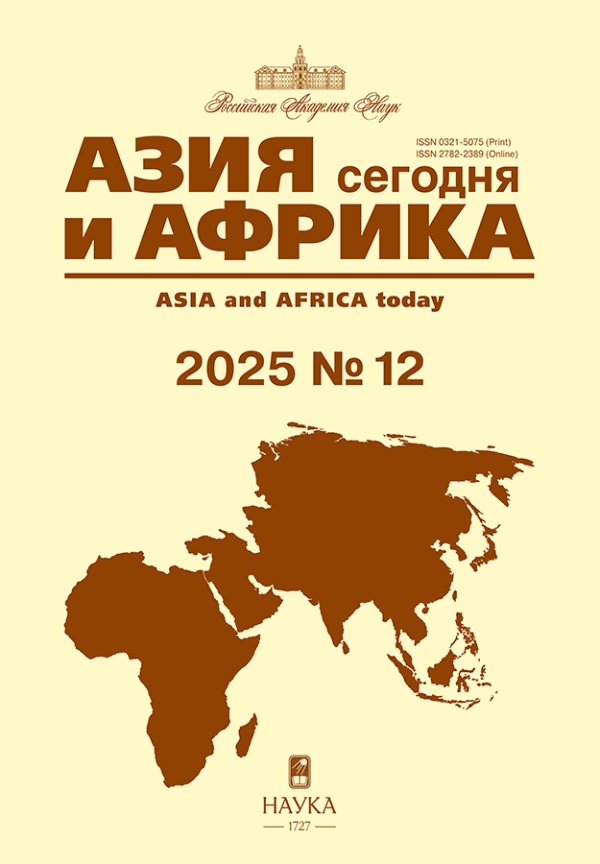How Significantly and Sustainably are Developing Countries Surpassing Advanced Economies in Terms of Productivity Dynamics?
- Authors: Meliantsev V.A.1
-
Affiliations:
- Lomonosov Moscow State University
- Issue: No 7 (2024)
- Pages: 5-16
- Section: Top problem
- URL: https://journals.rcsi.science/0321-5075/article/view/259853
- DOI: https://doi.org/10.31857/S032150750031387-7
- ID: 259853
Cite item
Full Text
Abstract
About the authors
Vitalii A. Meliantsev
Lomonosov Moscow State University
Email: vamel@iaas.msu.ru
ORCID iD: 0000-0002-9139-2753
Corresponding Member, Russian Academy of Sciences, Dr.Sc. (Economics), Professor, Head Moscow, Russi
References
- The World Bank. World Governance Indicators. https://www.worldbank.org/en/publication/worldwide-governanceindicators/interactive-data-access (accessed 05.03.2024)
- The UNDP. Human Development Report, 2023/2024. New York, 2024. 324 p.
- The WIPO. Global Innovation Index 2023. Geneva, 2023. 250 p.
- The World Bank. Global Productivity. Trends, Drivers, and Policies. Washington, D.C., 2021. 463 p.
- Мельянцев В.А. Основные тенденции, детерминанты и проблемы-противоречия современного экономического роста в развитых и развивающихся странах. Восток (Oriens). 2021. № 5. C. 203–215. doi: 10.31857/S086919080016660-3 Meliantsev V.A. 2021. Main Trends, Determinants and Problems-contradictions of Modern Economic Growth in Developed and Developing Countries. Vostok (Oriens). № 3. Pp. 203–215. (In Russ.). doi: 10.31857/S086919080016660-3
- The Conference Board. Total Economy Database. Summary Tables & Charts. Groningen, 2023. Tables 12, 13. https://conference-board.org/retrievefile.cfm?filename=TED_SummaryTables_Charts_april20231.pdf&type=subsite (accessed 15.04.2024)
- The IMF. World Economic Outlook, April 2024. Washington, D.C., 2024. 202 p.
- McKinsey Global Institute. Investing in Productivity Growth. New York, 2024. 58 p.
- Мельянцев В.А. Умные технологии, парадокс Солоу и противоречия социально-экономического развития в странах Запада и Востока в начале XXI века. Восток (Oriens). 2017. № 3. C. 162–180. Meliantsev V.A. 2017. Smart Technologies, the Solow Paradox and the Contradictions of Socio-economic Development in Western and Eastern Countries at the Beginning of the 21st Century. Vostok (Oriens). № 3. Pp. 162–180. (In Russ.)
- The World Bank. Falling Long-Term Growth Prospects. Trends, Expectations, and Policies. Washington, D.C., 2023. 564 p. 11. Parikh T. 2024. Is the Rich World Stuck in an ‘Upper-income Trap’? The Financial Times. 16.03.2024. https://ft.com/content/bc830276-c8d0-465a-88fc-e06eb83be90b (accessed 16.03.2024)
- Vollrath D. 2020. Fully Grown: Why a Stagnant Economy Is a Sign of Success. Chicago: The University of Chicago Press. 296 p.
- Acemoglu D., Johnson S. 2023. Power and Progress. Our Thousand-Year Struggle over Technology and Prosperity. New York: Public Affairs. 634 p.
- IFR. World Robotics, 2023 – Industrial Robots. Frankfurt am Main, 2023. 49 p.
- Мельянцев В.А. Догоняющий и перегоняющий рост развивающихся стран: масштабы, факторы, проблемы и перспективы. Азия и Африка сегодня. 2023. № 7. С. 5–13. doi: 10.31857/S032150750026562-0 Meliantsev V.A. 2023. Catching Up and Overtaking Growth of Developing Countries: Dimensions, Factors, Problems and Prospects. Asia and Africa today. № 7. Pp. 5–13. (In Russ.). doi: 10.31857/S032150750026562-0
- India Must Make Much Deeper Changes If It Is to Sustain Its Growth. The Economist. 22.04.2024. https://www.economist.com/special-report/2024/04/22/india-must-make-much-deeper-changes-if-it-is-to-sustain-itsgrowth (accessed 22.04.2024)
- Plender J. 2024. The Overlooked Threats to the Global Financial System. The Financial Times. 16.04.2024. https://www.ft.com/content/0b78c68b-c65c-4080-b779-17041c290eaa (accessed 16.04.2024)
- Мельянцев В.А. Ресурсоемкий / сберегающий экономический рост и развивающиеся страны. И.В.Дерюгина, отв. ред. Продовольственная и ресурсная безопасность в странах Азии и Африки. M., ИВ РАН. 2023. С. 31–47. Meliantsev V.A. 2023. Resource-intensive / efficient Economic Growth and Developing Countries. I.V.Deryugina, ed. Food and Resource Security in Asia and Africa. Moscow. Pp. 31–47. (In Russ.)
Supplementary files











